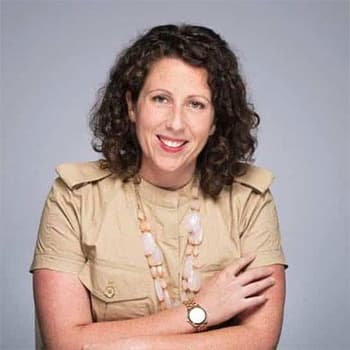There are many misconceptions about Other Specified Feeding or Eating Disorders (OSFED). Here are the facts.
Many unfortunatemyths about eating disordersprevail. For example, some people think that because someone has aneating disorderthat they should look a certain way, or that they just need to “have a burger,” or “watch their portions,” but these myths are often untrue.
When these myths persist, people may not get the help they need. People are far less likely to seek help if they feel misunderstood or that they can’t trust those around them, so explaining and exposing somecommon myths about eating disorderscan help people better support their loved ones suffering from this condition.
While anorexia and bulimia are more popularly known conditions, most people with eating disorders experienceOther Specified Feeding or Eating Disorders, or OSFED.Facts about OSFEDcan help clarify the confusion and direct people to the treatment and care that they need.
Bydebunking eating disorder myths, hopefully, more people can get the help they need.
New Year, New Beginnings.
Whether you are struggling with addiction, mental health or both, our expert team is here to guide you every step of the way. Don’t wait— reach out today to take the first step toward taking control of your life.
Myth 1: Few people have OSFED.
Fact: OSFED is common.
Researchers have studied the prevalence of various eating disorders, and ininterview-based studies, they have found the followingstatistics about eating disorders and OSFED. Out of the general population, at some point during their lifetime:
- 0.8-1.9% of people will develop anorexia nervosa
- 2.6% of people will have bulimia nervosa
- 5-11% of people will have OSFED
There are a few reasons why someone may think OSFED is rare. Many people have not heard this term in the first place. Essentially, OSFED is an umbrella term that is non-specific. It encompasses a wide variety of eating disorders that are not classified as other conditions.
The numbers above may even be under-representative because people do not want to admit that they have an eating disorder. They also may not recognize that their disordered eating behavior is problematic. Of the people who seek treatment,30%of them have OSFED.
Myth 2: Other specified feeding or eating disorders aren’t officially recognized mental health conditions.
Fact: OSFED is included in the Diagnostic and Statistical Manual of Mental Disorders, fifth edition (DSM-5).
The DSM-5 is the authority on the diagnosis of psychiatric andmental health conditions. In 2013, the DSM-5 was updated and has changed its definition of OSFED. It was previously called Eating Disorder Not Otherwise Specified (EDNOS).
By either name, OSFED encompasses a variety of other eating disorders. AnOSFED diagnosisis simply used for eating disorders that do not fulfill the criteria foranorexiaandbulimia. MostOSFED criteriaaresimilarto other eating disorders, andinclude:
- Having symptoms of a feeding or eating disorder that causes distress or impairment in social, occupational or other areas of function
- Symptoms that do not meet the criteria for any other feeding or eating disorder
Myth 3: OSFED isn’t as serious as anorexia or bulimia.
Fact: OSFED is dangerous.
Although this group ofeating disordersis not as well known as anorexia or bulimia, it is no less serious. Therisks of OSFEDare similar to other eating disorders, and if untreated, these conditions can have a host of psychological and physical consequences. Other unfortunate consequences of this disorder include metabolic collapse, but many people also die from suicide.
Myth 4: OSFED encompasses a specific group of eating disorders.
Fact: OSFED is a catch-all term for eating disorders not otherwise included in the DSM-5.
While there are some subcategories withinOSFED, this eating disorder category is an intentionally non-specific category intended to capture eating disorders that do not fit neatly into other established categories.
Types of OSFEDinclude, but are not exclusive to:
- Atypical anorexianervosa (without significant weight loss)
- Binge eating disorder (low frequency or limited duration)
- Bulimia nervosa (low frequency or limited duration)
- Purging disorder (binge eating absent)
- Night eating syndrome (binging after an evening meal or waking to eat)
- Other conditions that do not meet criteria for another eating disorder
Each of these conditions was shown to have significant negative consequences despite popular opinion otherwise.
Myth 5: There is a standard treatment approach for OSFED.
Fact: Since OSFED conditions are different, so are the treatments.
Effective treatment and recovery is a journey tailored to the individual. No one treatment strategy can work for everyone. Withtreatment for OSFED, medications and counseling are oftencited by mental health expertsas important tools, especially when there is aco-occurring substance use disorderor mental health condition. Certain substances such as tobacco orother drugsmight be abused by people who have eating disorders in attempts to curb appetite, for example.
The Recovery Village can help those who struggle with drug and alcohol addictions and co-occurring eating disorders.Contact usto see how we can help you in your recovery. The call is free and confidential and you don’t have to commit to a program to learn more about treatment.








